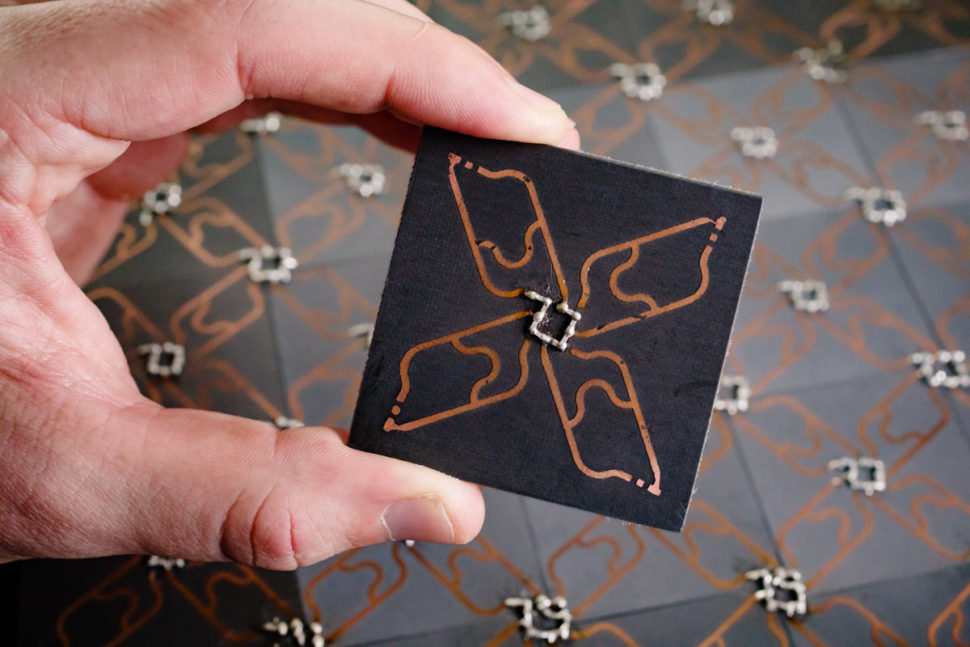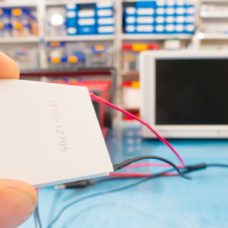Researchers have demonstrated the existence of a new phase of electronic matter for the first time.
In a study published in the journal Nature, engineers from the University of Illinois at Urbana-Champaign demonstrated a new form of electronic matter known as quadrupole topological insulators (QTI).
According to the researchers, QTI’s properties could potentially open new possibilities for computers in the future. Topological insulators are described as electrical insulators on the inside and conductors along their boundaries.
“TIs are electrical insulators on the inside and conductors along their boundaries, and may hold great potential for helping build low-power, robust computers and devices, all defined at the atomic scale,” Gaurav Bahl, a mechanical science and engineering professor and senior investigator of the team, said.
According to the research team, the unique properties of TIs make them a special form of electronic matter.
“Collections of electrons can form their own phases within materials. These can be familiar solid, liquid and gas phases like water, but they can also sometimes form more unusual phases like a TI,” Taylor Hughes, co-author of the study, went on to say.
New Form of Electronic Matter: The Quadrupole Topological Insulator
Through theoretical physics, scientists predicted that some of these TIs have an electrical property dubbed as quadrupole moment.
Under normal circumstances, electrons are capable of carrying charge in a material. While doing this, the material becomes bipolar, containing both positive and negative charge.
On the other hand, a quadrupole is considered a higher order class of material which allows the coupling of two positive and two negative charges.
“Electrons are single particles that carry charge in a material,” Wladimir Benalcazar, a physics graduate student, explained.
“We found that electrons in crystals can collectively arrange to give rise not only to charge dipole units – that is, pairings of positive and negative charges – but also high-order multipoles in which four or eight charges are brought together into a unit. The simplest member of these higher-order classes are quadrupoles in which two positive and two negative charges are coupled.”
During their demonstration, the UIUC researchers reportedly produced a “workable-scale analogue” of a QTI using a particular material from printed circuit boards.
Each circuit is said to contain a square of four similar resonators or devices that can absorb electromagnetic radiation at a specific frequency. Then, the boards were arranged in a grid pattern to form the crystal analogue.
“Each resonator behaves as an atom, and the connections between them behave as bonds between atoms,” Kitt Peterson, the lead author of the study and an electrical engineering graduate student, said.
“We apply microwave radiation to the system and measure how much is absorbed by each resonator, which tells us about how electrons would behave in an analogous crystal. The more microwave radiation is absorbed by a resonator, the more likely it is to find an electron on the corresponding atom.”
It was observed that the corners of the connected resonators absorbed the microwave radiation at a characteristic frequency while the rest of the units did not. When they tuned the system to separate the bottom row from the grid entirely, the next highest rows reportedly exhibited topological effects by also absorbing the radiation.
“The edges of a QTI are not conductive like you would see in a typical TI,” Bahl explained.
“Instead only the corners are active, that is, the edges of the edges, and are analogous to the four localized point charges that would form what is known as a quadrupole moment. Exactly as Taylor and Wladimir predicted.”
After the demonstration, the researchers then measured the amount of microwave radiation each resonator within the QTI absorbed. This, according to Peterson, confirms “the resonant states in a precise frequency range and located precisely in the corners.”
“This pointed to the existence of predicted protected states that would be filled by electrons to form four corner charges,” he went on to say.
The researchers believe that their experiment is proof that scientists are now starting to understand the potential of the new electronic matter and its practical application.
“As theoretical physicists, Wladimir and I could predict the existence of this new form of matter, but no material has been found to have these properties so far,” Hughes said. “Collaborating with engineers helped turn our prediction into reality.”
















Comments (0)
Most Recent